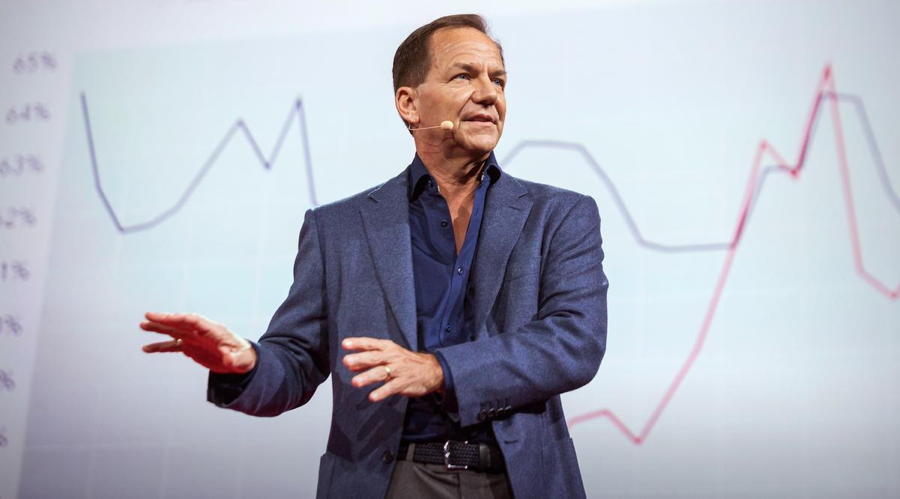
From Tony Robbins Money book:
Tony Robbins: Following up on diversification, how do you think about asset allocation in terms of playing defense?
Paul Tudor Jones: There’s never going to be a time where you can say with certainty that this is the mix I should have for the next five or ten years. The world changes so fast. If you go and look right now, the valuations of both stocks and bonds in the US are both ridiculously overvalued. And cash is worthless, so what do you do with your money? Well, there’s a time when to hold em and a time when to fold em. You’re not going to necessarily always be in situation to make a lot of money, where the opportunities are great.
Tony Robbins: Okay, any specific strategies for protecting your portfolio?
Trader Paul Tudor Jones: I teach an undergrad class at the University of Virginia, and I tell my students, “I’m going to save you from going to business school. Here, you’re getting a $100k class, and I’m going to give it to you in two thoughts, okay? You don’t need to go to business school; you’ve only got to remember two things. The first is, you always want to be with whatever the predominant trend is.
Tony Robbins: So my next question is, how do you determine the trend?
Paul Tudor Jones: My metric for everything I look at is the 200-day moving average of closing prices. I’ve seen too many things go to zero, stocks and commodities. The whole trick in investing is: “How do I keep from losing everything?” If you use the 200-day moving average rule, then you get out. You play defense, and you get out.
Tony Robbins: That is considered one of the top three trades of all time, in all history (1987 Crash)! Did your theory about the 200-day moving average alert you to that one?
Paul Tudor Jones: You got it. It had done under the 200-day moving target. At the very top of the crash, I was flat.
Tony Robbins: What’s the second thought for students?
Paul Tudor Jones: 5:1 (risk /reward). Five to one means I’m risking one dollar to make five. What five to one does is allow you to have a hit ratio of 20%. I can actually be a complete imbecile. I can be wrong 80% of the time, and I’m still not going to lose.
Tony Robbins: Since asset allocation is so important, let me ask you: If you couldn’t pass on any of your money to your kids but only a specific portfolio and a set of principles to guide them, what would it be?
Paul Tudor Jones: I get very nervous about the retail investor, the average investor, because it’s really, really hard. If this was easy, if there was one formula, one way to do it, we’d all be zillionaires. One principle for sure would get out of anything that falls below the 200-day moving average.
Trend following? Boom.
Market Wizards
Jack Schwager: When did you first get interested in trading?
Paul Tudor Jones: When I was in college I read an article on Richard Dennis, which made a big impression on me. I thought that Dennis had the greatest job in the world. I already had an appreciation for trading because my uncle, Billy Dunavant, was a very successful cotton trader. In 1976, after I finished college, I went to my uncle and asked him if he could help me get started as a trader. He sent me to Eli Tullis, a famous cotton trader, who lived in New Orleans. Eli is the best trader I know, he told me. I went down to see Eli and he offered me a job on the floor of the New York Cotton Exchange.
More on trend following. More on Paul tudor and losers average losers.
